Box & Bundle
The package has a photo of the PSU on its face and several badges describing the ATX v3.1 compatibility and the ten-year warranty. On the back side of the box, there are more details about the PSU’s technical details.
Product Photos
The PSU has an interesting exterior design, with a nicely designed fan grille with large perforations to restrict the fan’s airflow as little as possible. On the front side, besides the AC receptacle and the power switch, there is an additional switch for toggling on/off the PSU’s semi-passive fan operation. Around the back, the modular board hosts an extra propriety socket next to the 12V-2×6 one, providing two extra sense pins. Asus claims the extra sense pins help achieve tighter load regulation on the 12+4 pin connector.
Cables
| Modular Cables | ||||
| Description | Cable Count | Connector Count (Total) | Gauge | In Cable Capacitors |
|---|---|---|---|---|
| ATX connector 20+4 pin (610mm) | 1 | 1 | 18AWG | No |
| 4+4 pin EPS12V (1000mm) | 2 | 2 | 18AWG | No |
| 6+2 pin PCIe (750mm) | 4 | 4 | 18AWG | No |
| 12+4 pin PCIe (745mm) (600W) | 1 | 1 | 16-24AWG | No |
| SATA (400mm+120mm+120mm) | 2 | 6 | 18AWG | No |
| 4-pin Molex (390mm+150mm+150mm) | 1 | 3 | 18AWG | No |
The cables and connectors provided are enough to allow the PSU to deliver its full power without any issues. They include two EPS, four PCIe on dedicated cables, a single 12V-2×6 set at 600W, six SATA, and three 4-pin Molex connectors. All cables are long, with the EPS cables reaching one meter, ensuring compatibility with whatever chassis you use. The distance between the 4-pin Molex connectors is adequate at 150mm, but the distance between the SATA connectors is short. Lastly, all cables are individually sleeved.
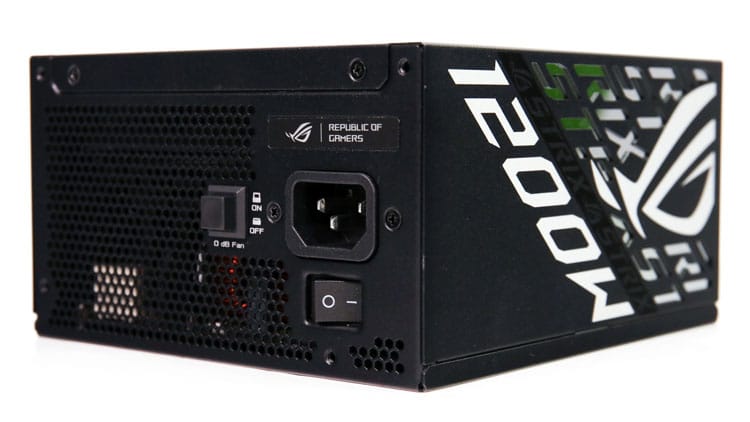
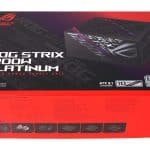
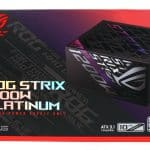
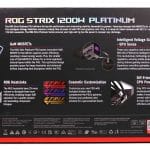

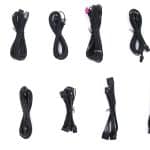

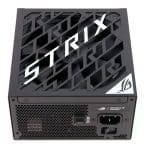



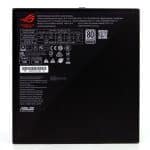
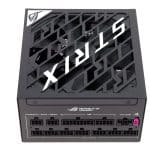
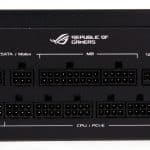
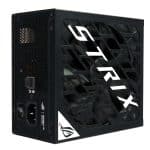
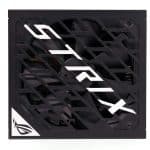

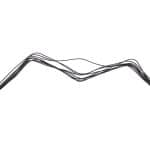
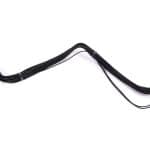

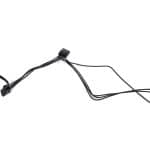

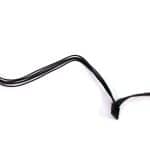


@crmaris, what do you think of ASUS ROG Strix 1200W Gold Aura Edition? Is it worse than this one?
Why Asus says on their Website only PCIE 5.0 ready? Is there something missing?
Marketing didn’t get the memo 🙂
This one states PCIe 5.0 compliant, and on Nvidia’s website 5090 requires PCIe 5.1 compliance.
Will this PSU still be good for 5090?
it will be ok yes.
So Asus is going to release a rev. 2 of this PSU with updated fan?
Or you just going to be lucky to get one with better fan?
This is so sluggish of Asus.
I was really hoping this PSU would be the one I would buy, instead of the FSP hydro ti pro 1000w.
They installed new fans, after we found this issue.
actually this unit has the improved fan.
So with the new fan, do you recommend this over the FSP hydro ti pro 1000w in terms of pure silence?
Nope
I read that ball bearing fans become significantly louder over their lifespan, so they’re deceptive in terms of noise. Is that true? Also, I read that if they’re dropped they can be ruined, so they’re more delicate than FDB fans. It seems like a no-brainer to exclusively use FDB fans in high-end PSUs. Ball bearing fans appear to be able to produce more static pressure than other fan types but since FDB fans apparently can be used in low-noise PSUs, it seems that that advantage isn’t enough to outweight the drawbacks.
With not high quality DBB fans yes this can be the case.